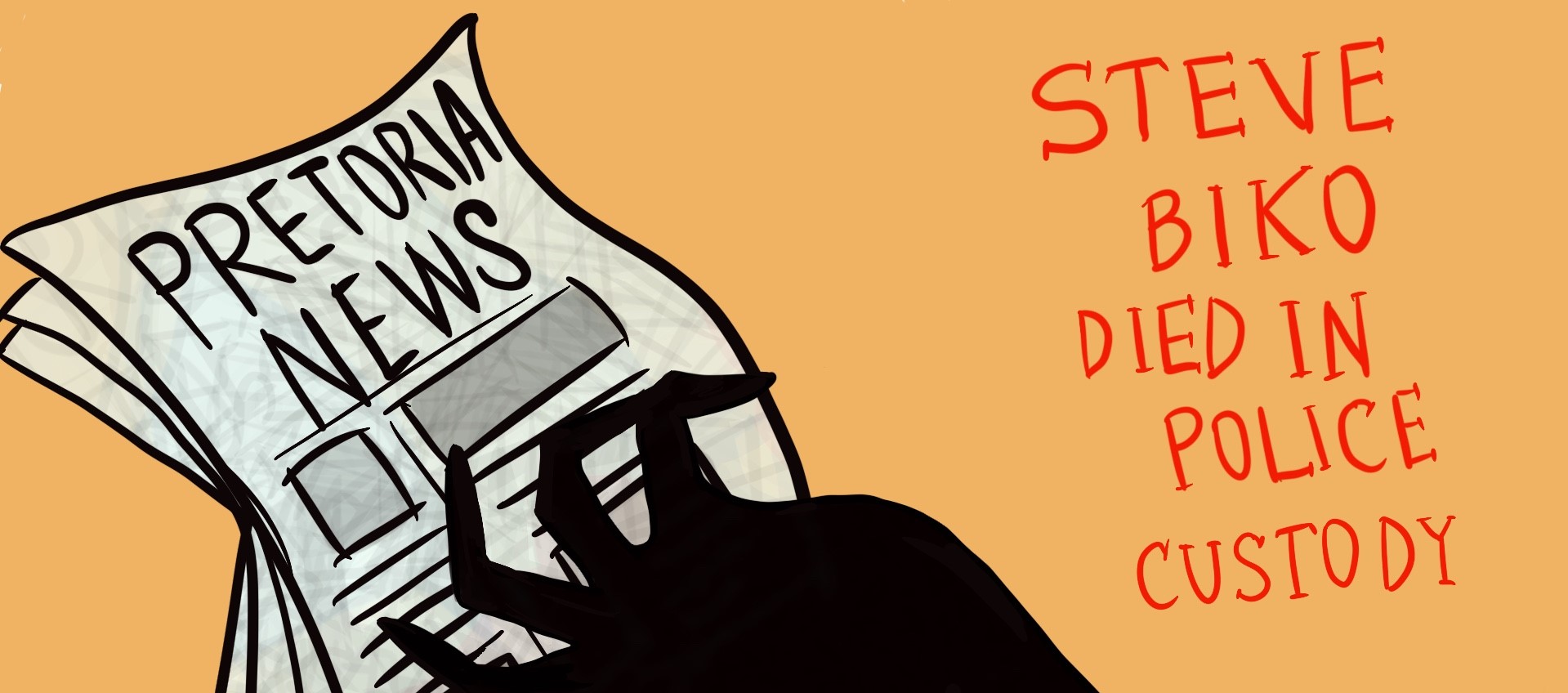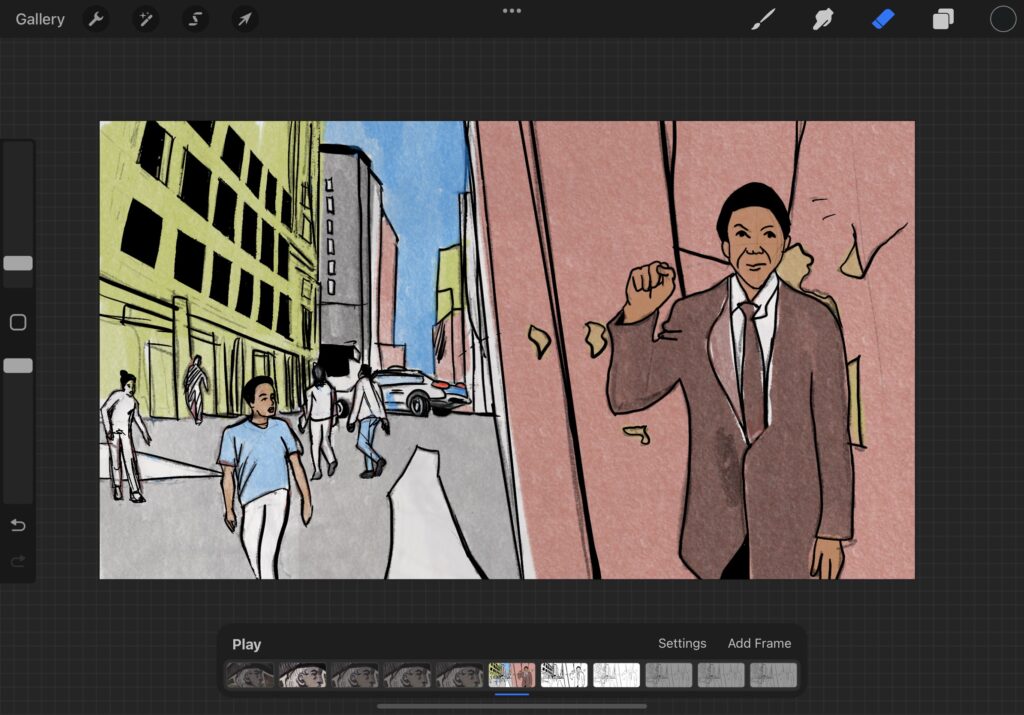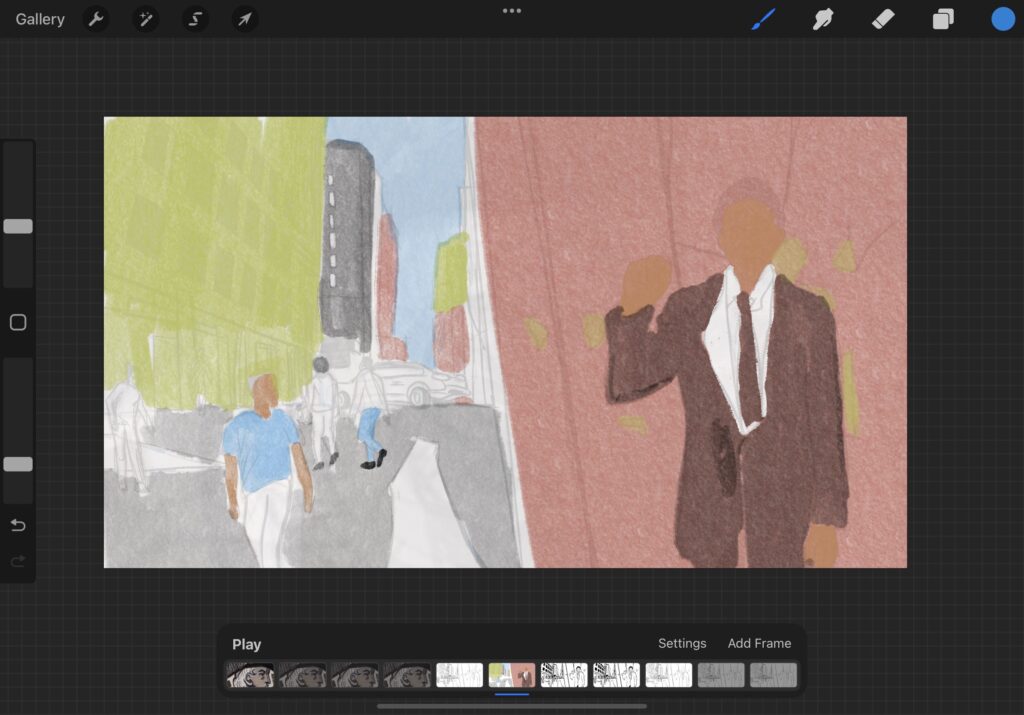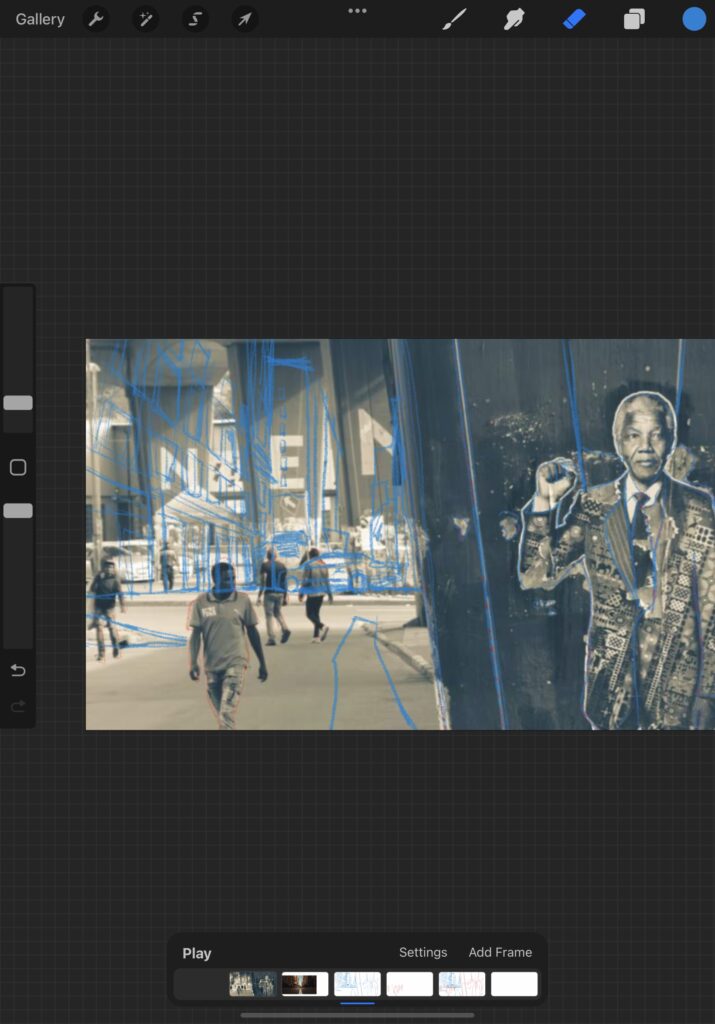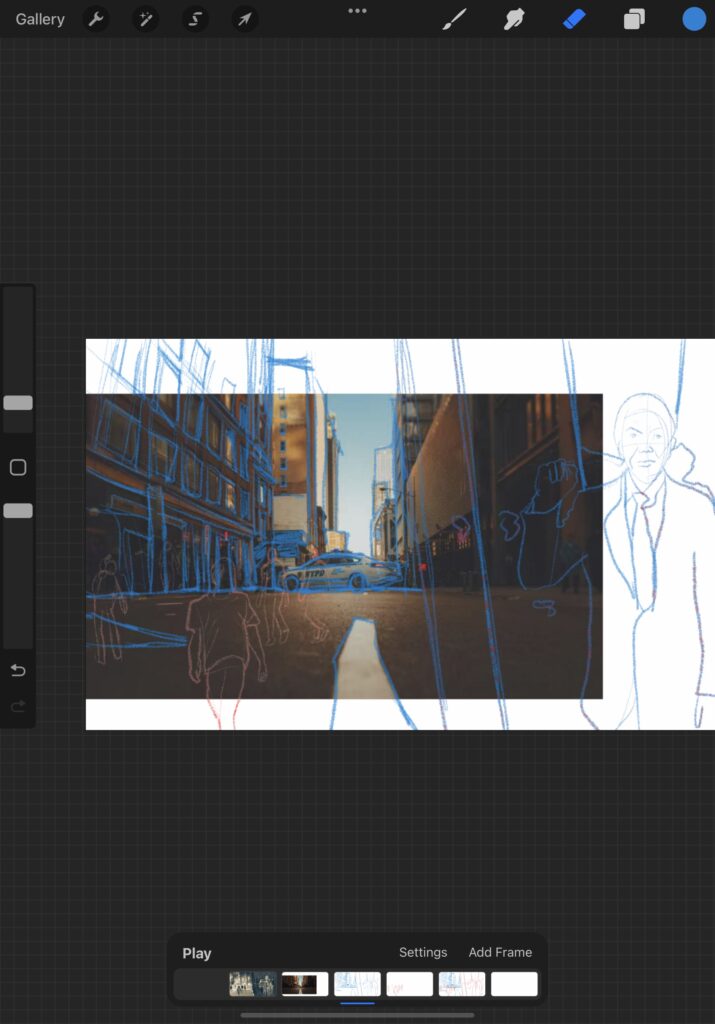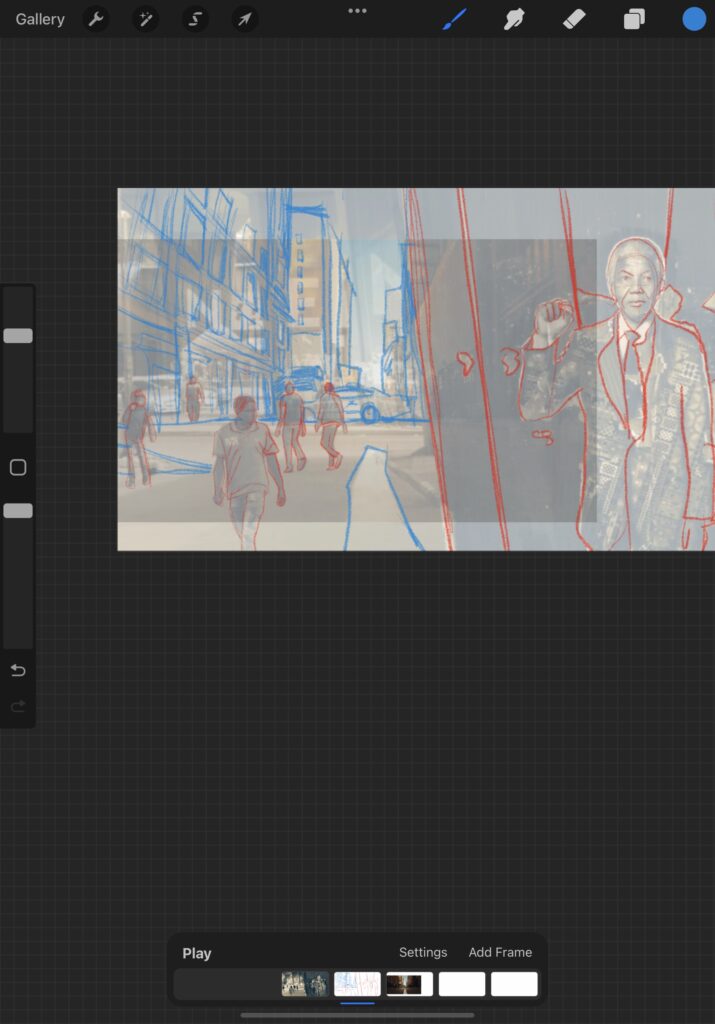‘Change the way people think and things will never be the same.’ Steve Biko
Sondes Jelassi’s Anti- Apartheid, Now commission, ‘We Are Steve Biko,’ celebrates the life, work and impact of Steve Biko, leader of the South African anti-apartheid Black Consciousness Movement in the 1970’s. Her commission, a short animation on Biko’s life and his continuing influence throughout the world today, launched on what would have been his 76th birthday, 18 December 2022.
We are Steve Biko – animation by Sondes Jelassi
Sondes chose to portray Steve Biko, who died in South African police custody on 12th September 1977, because she wants to provoke thinking about the global and contemporary impact of the Black Consciousness Movement as inspired by his life and to ‘better represent those who struggled during the years of the Apartheid.’
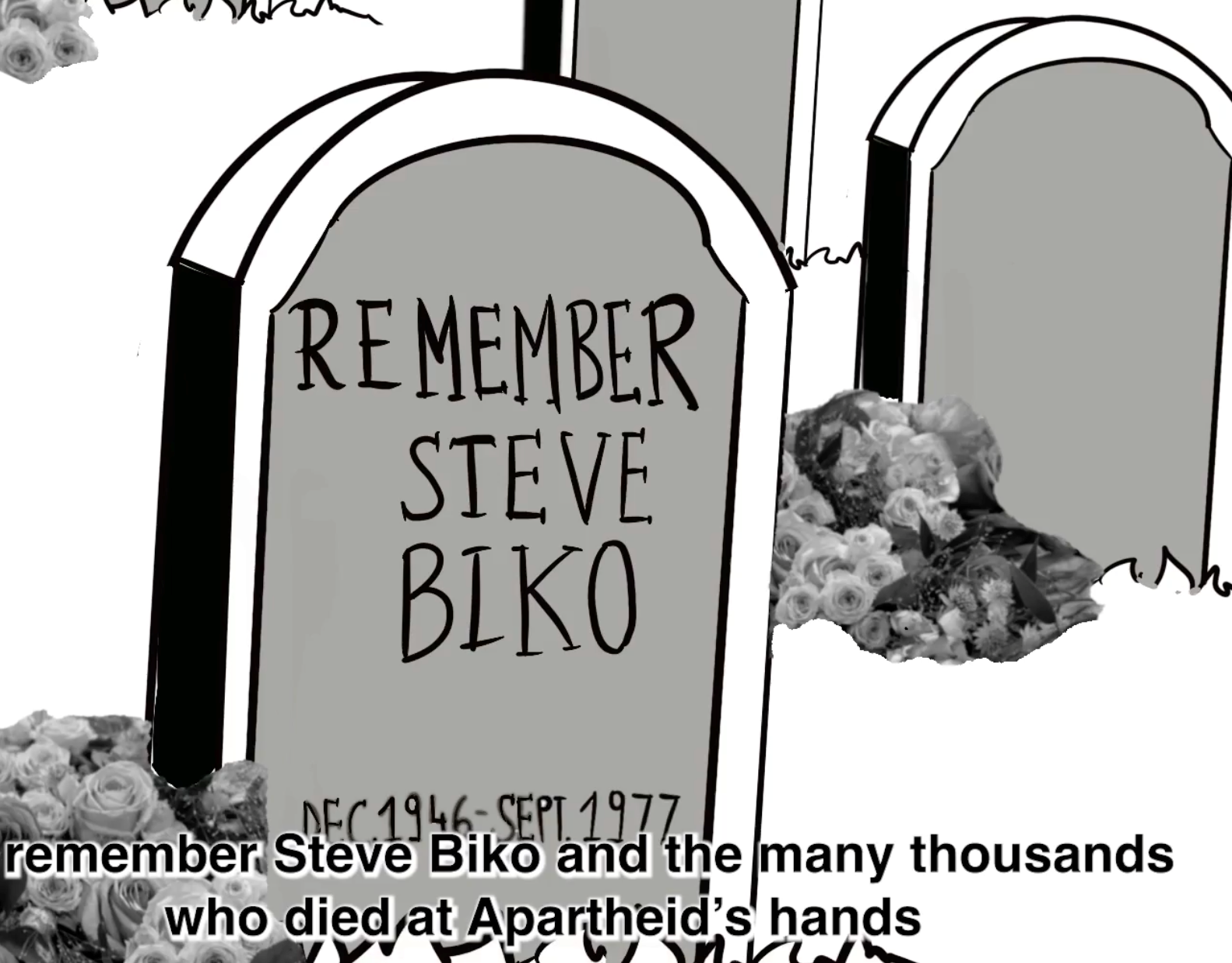
‘Remember Steve Biko and the victims of Apartheid’, still from “We are Biko” animation at 2min 02 secs
She believes that it is important today to continue to learn from Steve Biko’s philosophy, that to defeat injustice [in the historical context, of apartheid] it first starts with an inward looking process which empowers the black individual through self-belief, self-worth and understanding of the positive values that are foundational within African indigenous cultures. Once this true ‘Black Consciousness’ has been awakened then true liberation from oppression and injustice is possible, with collaboration and collective action led by Black people (Black used politically rather than to denote ethno-cultural heritage, but rather those disenfranchised by the oppressor/authoritarian system).
“At the heart of this thinking is the realisation by blacks that the most potent weapon in the hands of the oppressor is the mind of the oppressed” Steve Biko

Steve Biko, still image from animation 1min 11sec, Sondes Jelassi
Furthermore, Sondes wanted to use her animation to communicate the power of ‘how valuable and powerful real friendship is’ and that she was inspired by the evident allyship between Biko and the white South African journalist Donald Woods and believes that there are valuable learnings drawn from these two strands that can underpin critical success for today’s Black Lives Matter movement

Collage protest, still from “We are Biko” animation, at 1 min 30 secs
She includes Nelson Mandela in the work because both, she says, were instrumental in the fight against apartheid, ‘The comparison I make inside the visual story shows important similarities that the two characters [of Biko & Mandela] both presents: they were activists’ who shared the same values to fight for an equal society.’

PROTEST IN THE STREET (still from animation at 19 secs): “This scene opens the story with the stop motions. It is the Nelson Mandela reproduction on the wall with the raised fist and is in contrast to the police machine in the street. Considering the presence of the narrator/character, the composition gives a sense of reality but also it works as a dreamy, iconic image. Whilst this kind of street art would not have been found in apartheid South Africa, I wanted to draw the viewer in through an aesthetic and colours which reminded me of Saturday morning educational cartoons of the 1970’s.” (Jelassi)
Process of creating one frame of the animation that culminates in still from “We are Steve Biko” at 19 secs
The purpose of her project, she says, is to engage with a young audience and to emphasise this sensitive topic through the specific visual communication practice of animation. The animation includes story sequences made by a mix of analog and digital illustrations, collage and stop motion techniques. The stop motion animation has been created through the multiplication of photography shots of the drawn sketches. Sondes chose music by AlexiAction from Pixabay to accompany the animation.
More about the process of creating the animation can be read here..
Sondes Jelassi was born in Milan and is an Italian-Tunisian Illustration and Animation student at London Metropolitan University. Her influences range from Japanese and American artists, animators, and filmmakers, exponents of the 1980s, to Italian fumetto and noir aesthetic from the 1960s-1970s.


